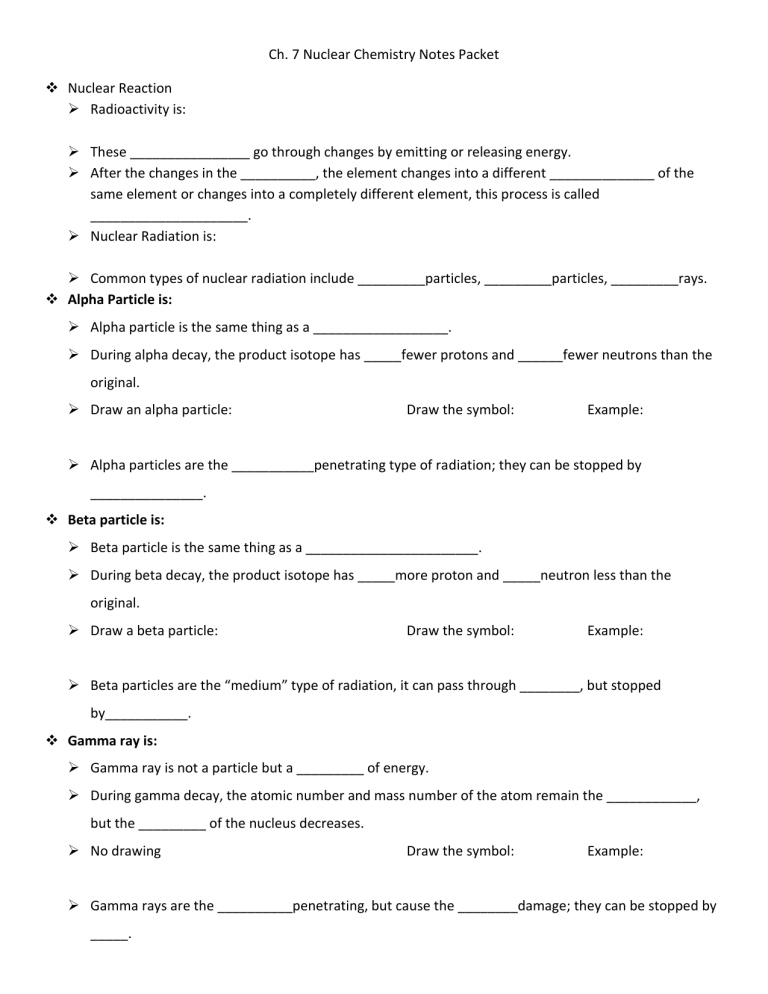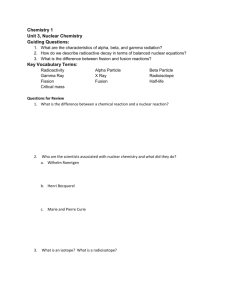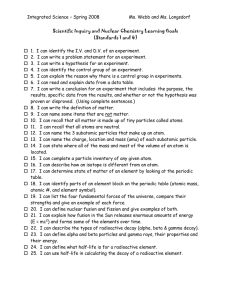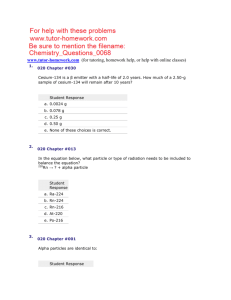
Ch. 7 Nuclear Chemistry Notes Packet
Nuclear Reaction
Radioactivity is:
These ________________ go through changes by emitting or releasing energy.
After the changes in the __________, the element changes into a different ______________ of the same element or changes into a completely different element, this process is called
_____________________.
Nuclear Radiation is:
Common types of nuclear radiation include _________particles, _________particles, _________rays.
Alpha Particle is:
Alpha particle is the same thing as a __________________.
During alpha decay, the product isotope has _____fewer protons and ______fewer neutrons than the original.
Draw an alpha particle: Draw the symbol: Example:
Alpha particles are the ___________penetrating type of radiation; they can be stopped by
_______________.
Beta particle is:
Beta particle is the same thing as a _______________________.
During beta decay, the product isotope has _____more proton and _____neutron less than the
original.
Draw a beta particle: Draw the symbol: Example:
Beta particles are the “medium” type of radiation, it can pass through ________, but stopped by___________.
Gamma ray is:
Gamma ray is not a particle but a _________ of energy.
During gamma decay, the atomic number and mass number of the atom remain the ____________, but the _________ of the nucleus decreases.
No drawing Draw the symbol: Example:
Gamma rays are the __________penetrating, but cause the ________damage; they can be stopped by
_____.
Nuclear Decay
Explain Alpha decay:
Explain Beta decay:
Half-life is
Unlike chemical reaction rates, which vary with the conditions of a reaction, nuclear decay rates are
________.
How do you calculate half-life?__________________________________________________________.
After 1 half-life __________of the sample remains, after 2 half life’s___________ of the sample remains, after 3 half life’s __________ of the sample remains.
Example: Iodine-131 has a half-life of 8.07 days, after 2 half life’s how much of the sample remains?
After 3? Formula: half-lives elapsed= total time of decay/half-life
Differentiate between fission and fusion
Fission is
Fission occurs in_____________________________.
Example:
In nuclear fission, tremendous amounts of _________ can be produced from vary small amounts of mass.
Fusion is
Fusion occurs in_______________________________.
Example:
Describe nuclear energy, its practical application as an alternative energy source, and its potential problems.
Pg (235-240)
Pros: Cons:




